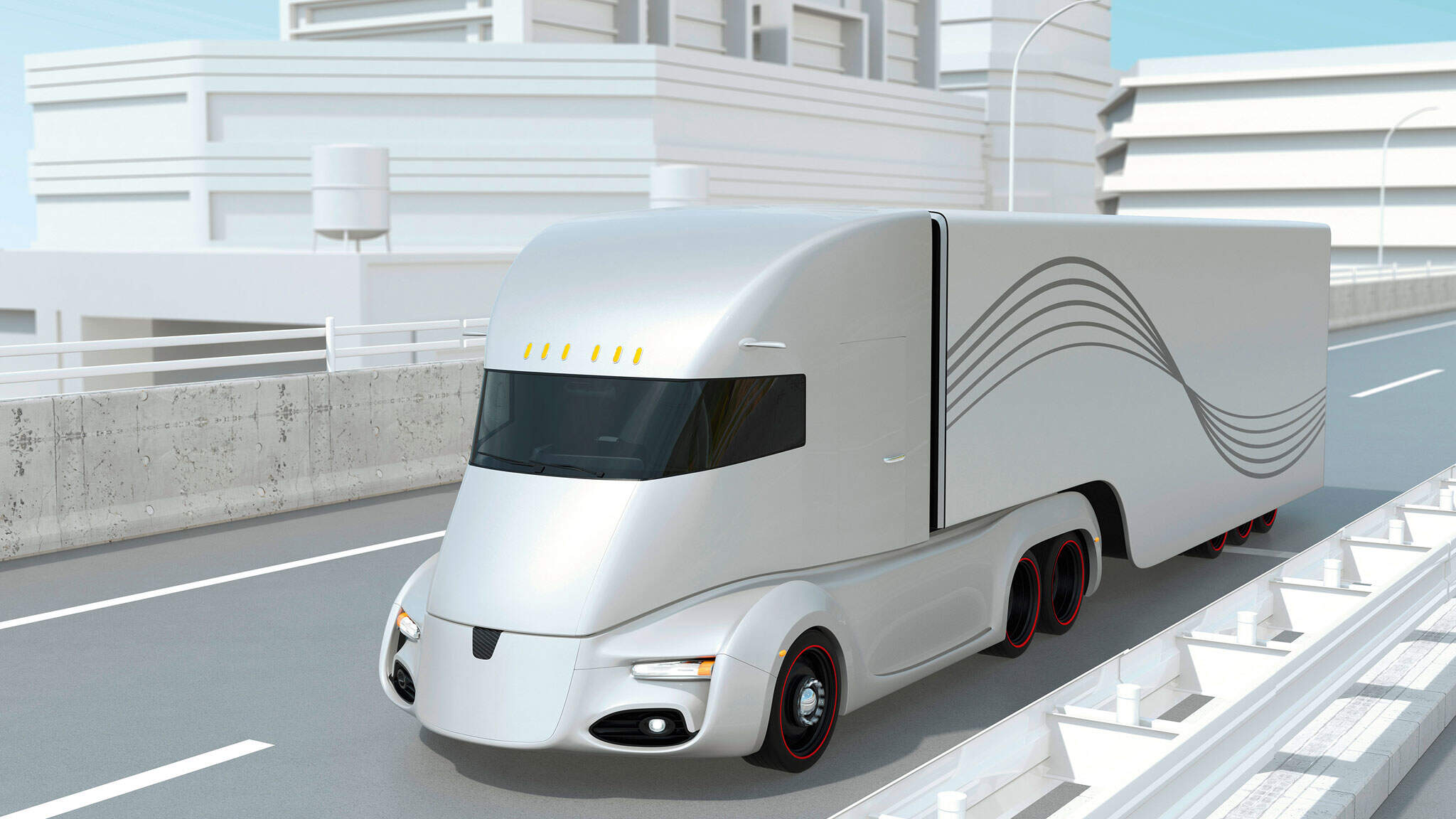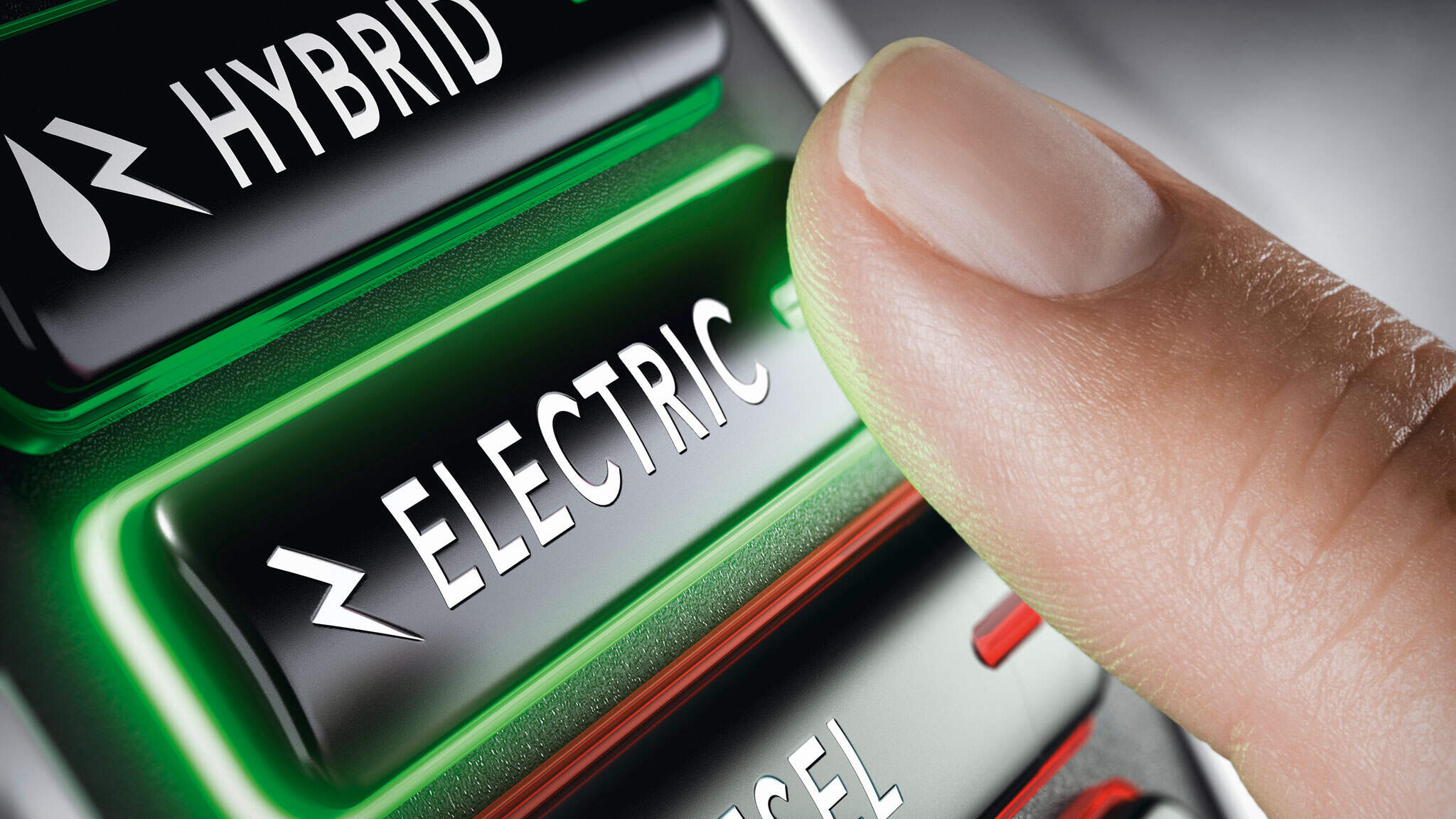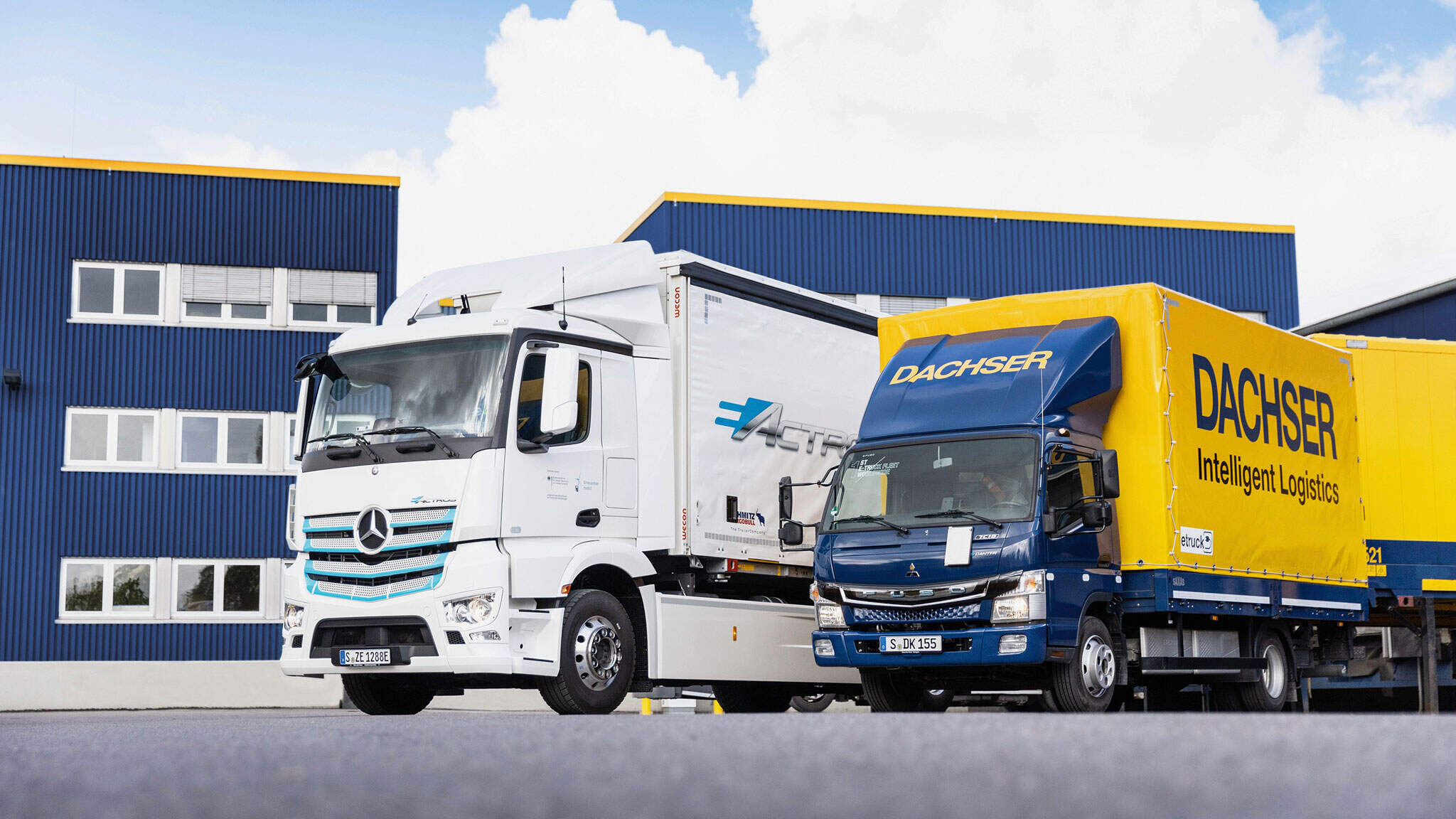Alternative Drive Concepts – What’s next?
Where are drive technologies headed? Will electric motors soon crowd diesel out of the picture? Or will completely different energy sources come into play? At DACHSER, cross-divisional logistics specialists are busy investigating alternative drive technologies and their practical application in the logistics network.

Aclimate-neutral economy by 2050: this is the ambitious goal the European Union recently announced as part of its “Green Deal.” In the EU’s efforts to implement the 2015 Paris Climate Change Agreement, restructuring and reorganizing transport and traffic play a key role, as they account for around one-fifth of all greenhouse gas emissions in developed industrial nations such as Germany.
"Clean mobility is possible only if the mobility system is efficiently organized and built upon digitalization, data exchange, and compatible standards. This makes intelligent traffic management possible and allows for automated mobility among all carriers, which in turn leads to less congestion and higher capacity utilization rates,” the European Commission states. The basis for clean mobility is to be created by the gradual switch to non-fossil-fuel powertrains in passenger and freight transport.
In other words, climate-friendly mobility requires complex answers. Because of this, DACHSER—in addition to its existing environmental management endeavors and the City Distribution innovation project, which has been running for several years—has intensified its analysis of alternative drive technologies and fuels. “We’re examining current and future technologies together with our in-house specialists and branches and discussing them with external partners. Our focus is on evaluating alternative drive systems and fuels as well as the new logistics concepts they entail, especially for truck transport,” says Stefan Hohm, Corporate Director Corporate Solutions, Research & Development at DACHSER. To this end, DACHSER is working hard across all divisions and domains. In its activities and test projects, R&D is in constant interdisciplinary dialogue with experts from Road and from Air & Sea Logistics.
For the short term, however, there are no market-ready solutions in sight. “There’s currently no way to apply any of the sustainably emission-free alternative drive systems and fuels out there in practice, either for technical reasons or because of economic factors,” explains Andre Kranke, Department Head R&D Research & Innovation Management.
Wanted – Solutions for long-distance transport
But one thing is clear: in the long term, the future belongs to the electric motor, powered by electricity either from batteries or from a hydrogen fuel cell. DACHSER is already operating its first battery-powered trucks within the scope of new city logistics projects, for example in Stuttgart, Berlin, or Hamburg. Yet with ranges that top out at 200 km, these vehicles are still very limited. In the medium term, it seems technically possible—albeit still difficult to quantify economically—that battery-powered trucks will be used for regional distribution covering a range of about 450 km. “But beyond that, the case for pure battery power becomes very iffy. This technology doesn’t allow for a relationship between range, payload, and loading times that would pay off for long-distance transport routes,” Kranke says.
Germany is currently testing a way to power electric vehicles via overhead power lines, on the “eHighway” on the A1 motorway near the city of Lübeck and elsewhere. Could this open the way to long-distance electric transport? Hardly. “One reason that won’t work is the constant need to transfer freight between short- and long-distance transport. Another is that long-distance freight traffic would require a pan-European overhead line system. Such a system seems barely achievable at present in view of the high investment costs and the varying conditions in different geographical areas,” Hohm notes.
In the long term, the future belongs to the electric motor, powered by electricity either from batteries or from a hydrogen fuel cell. DACHSER is already operating its first battery-powered trucks within the scope of new city logistics projects, for example in Stuttgart, Berlin, or Hamburg.
What does all this mean for the diesel engine? “It’s still the most widely used and most cost-effective drive system in freight transport, and is likely to remain so over the medium term,” Kranke says. The high energy density of diesel fuel makes it possible to drive very long distances, and the technology is highly refined—thanks in no small part to the pressure of increasingly stringent EU standards. And finally, diesel truck operations are efficient because they make use of existing global infrastructure and vehicle technology. In combination with second-generation biofuels, diesel engines even stand to achieve significant greenhouse gas reductions in the short term in some EU countries. This gives them a valuable role in climate protection, even if only as a step on the way to electromobility.
"So from an ecological point of view, traffic planners should be discussing the approval of additional routes within Germany for longer trucks and permits for them to operate cross-border services,” Kranke advises.

Natural-gas powertrains still have unexplored potential
Researchers are also looking into options for powering truck engines not with diesel but with natural gas, in the form of either compressed natural gas (CNG) or liquefied natural gas (LNG). Using fossil-based natural gas does not provide any significant climate benefits. “When taking the full picture into account (meaning a well-to-wheel perspective), we’re talking about CO2 savings ranging from minus 15 percent to plus 10 percent compared to a modern diesel truck, depending on the technology used,” Hohm says. Only bio-LNG and bio-CNG actually come into consideration as intermediate technologies; however, their economic feasibility and suitability for everyday use vary greatly within the EU and so they must be assessed on a case-by-case basis.
There is also a lot of discussion in logistics about synfuels, that is, liquid or gaseous fuels (diesel, LNG, methanol, etc.) produced synthetically using electricity. For these to be climate-neutral, the fuels must be produced on the basis of power-to-X technologies. For example, the power-to-gas process converts sustainably generated electricity—mainly from wind and solar power—into green hydrogen, which is the basis for all synfuels. But since the energy lost in the progression from electricity to green hydrogen to synfuel is still extremely high, there are currently no economically viable implementations of this idea. It seems more promising to use the green hydrogen directly in the form of a fuel-cell drive for trucks.
An energetic wonder
Hailed for a long time as an energy miracle, the fuel cell had almost completely disappeared for a period from public discussion. Now it is experiencing a comeback under the pressure of the transport transformation. Fuel cells convert hydrogen into electricity that then powers the electric motor. Actually, the technology is already well advanced: for example, fuel cells have become an indispensable part of space travel, and have also already proven their suitability for everyday use in ground conveyors. But the technology has yet to prove itself on the road.
There is still a lot to be done to make fuel cells practicable. At the moment, it is really only prototypes that are in use, although the first small test fleets have been announced. “We’re still a long way from seeing large-scale production of fuel-cell trucks replace diesel trucks anytime soon,” Kranke observes. Among well-known manufacturers, he continues, only the global market leader Mercedes-Benz has so far committed itself to a specific fuel-cell technology strategy. The company plans to launch trucks with hydrogen fuel cells in 2029. From 2039 onward, the idea is for all commercial vehicles rolling off its assembly lines in Stuttgart to be powered either by hydrogen fuel cells or by batteries.

Step up the dialogue
Hohm’s view of the situation as it now stands is mixed: “Fossil-based LNG and CNG for trucks won’t help us achieve our climate goals, because they’re not definitively better than a modern Euro VI diesel truck. Batteries are too heavy for all-electric heavy-duty transport; the charging infrastructure would be extremely complicated and expensive to set up—if it ever happens—and vehicles with this technology can’t usefully transport payloads. Drive systems with hydrogen fuel cells seem promising, but in terms of efficiency, suitability for everyday use, and availability, the technology is still a long way off.”
For DACHSER, this means stepping up efforts to address all these issues in research and development. As Hohm puts it, “We’re continuing to develop alternative powertrain systems for freight transport. To this end, we’re further intensifying our collaboration with initiatives and associations, with manufacturers and research partners, and we’re expanding our knowledge and networks by participating in pilot projects. In this way, we aim to do our part to achieve the climate goal for 2050.”
